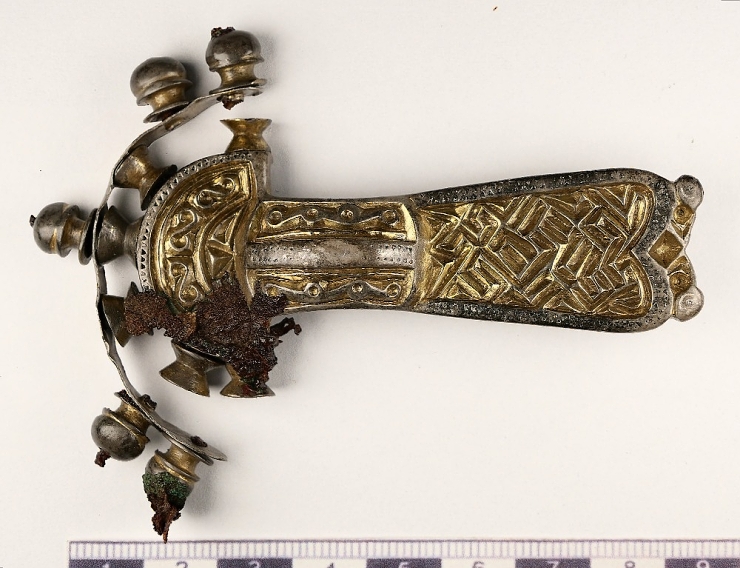Zajímavý článek, paráda.
New findings about the burial ground from the time of the migration of peoples in Sendražice
Categories: Castles, strongholds and extinct places , Finds and rescue research in the Czech Republic
In 2019, archaeologists discovered a unique 5th-century female tomb with rich equipment in Sendražice near Hradec Králové. It is one of a total of six tombs found here from the early period of migration. Five of them were looted, but the intact log cabin grave contained an amazing collection of artifacts of a high-ranking woman. This is an unprecedented finding in the Czech Republic .
The age of the buried at the time of death ranged from 16 to 55 years. An unclaimed grave was steamed by a woman between the ages of 35 and 50. She was buried in a wooden chamber grave. A small animal was also stored with her. It is only the second similar found grave in Eastern Bohemia from the period of migration of nations. Graves from this period are rare: “The first in the region was the tomb in Plotiště nad Labem discovered in the 1960s. It was the grave of an older man with a child, "said Pavel Horník, archaeologist of the Ministry of Interior HK
Among the artefacts of the woman's grave were, for example, a tiara made of gold decorated targets, four clasps cleverly made of gold and silver, inlaid semi-precious stones, glass beads, an iron knife, a bone comb, eggshells and a ceramic vessel. The pair of silver buckles placed in the area of her lap still contains large fragments of textile with a canvas and twill weave from threads with a diameter of 0.3 - 0.6 mm. One of the fabrics comes from a garment with buckles, the other belongs to a coat or fabric with which the woman was covered. According to Helena Březinová from the Archaeological Institute of the Academy of Sciences of the Czech Republic, remnants of leather and fur were also found on the buckles.
Skeletal remains were found in five looted graves, as well as a short sword "scramasax", several iron knives, metal belts, shoe fittings, antler combs, amber and glass beads. One ceramic vessel survived the looting intact. Analysis of the residues inside the container revealed that ruminant meat was boiling in it, but no traces of plant origin were found.
So far, the osteological examination has only been able to confirm the sex of the woman in the intact grave, because the remains in the remaining graves were damaged during the looting. Based on the tomb equipment, archaeologists believe that a man was buried in grave 3 and a woman in grave 6. Traces of arthritic changes have been found on some bones, suggesting that they may have belonged to someone older or that he worked too hard and hard during his life. Traces of cancer were found in an individual's skull and pelvis. Another had an asymmetric development of the muscles of the lower limbs. Due to the lack of skeletal remains, it was not possible to determine the cause of this asymmetry, but it could be, for example, the result of a stroke. Tooth decay and joint disease or damage were also found ...
Skeletal remains will be further studied. Radiocarbon dating will be performed to refine the dating of graves. Stable isotope analysis reveals the diet and areas of origin of the deceased. The chemical composition of the containers reveals whether they are made from local raw materials or imported. DNA analysis will be performed that can confirm or refute the kinship of the deceased.
Artifacts from all graves are examined by experts from Masaryk University in Brno, the University of Chemical Technology in Prague, the Archaeological Institute of the Academy of Sciences of the Czech Republic, the Mining Museum in Příbram and the Max Planck Institute in Leipzig.
Roman Němec





The article is included in categories:













